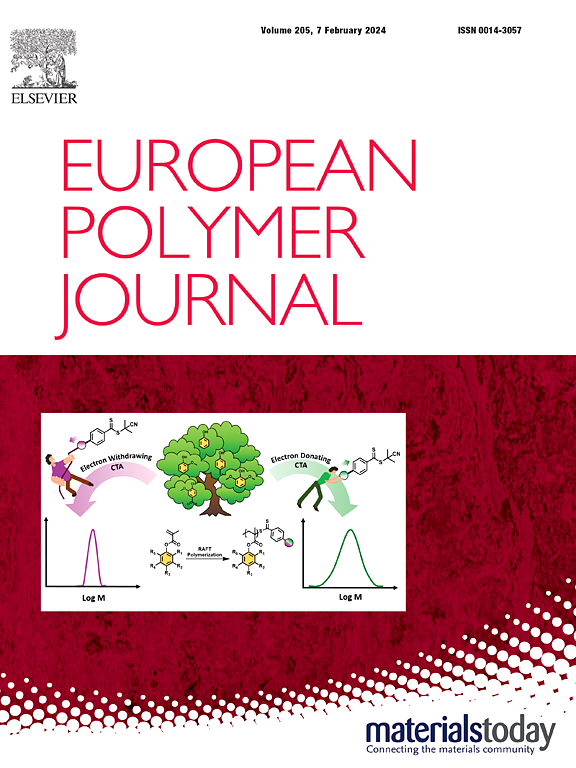A bicyclic carbonate with diamide unit and its tough and strong bio-based linear non-isocyanate polyurethanes containing polyitaconamide sequences
IF 5.8
2区 化学
Q1 POLYMER SCIENCE
引用次数: 0
Abstract
Under the background of sustainable development in polyurethane field, the aminolysis of cyclic carbonates (CCs) is one of the most promising and competitive ways to prepare non-isocyanate polyurethane (NIPUs). Nowadays, most of the 5-membered CCs are synthesized by a catalytic cyclocarbonation of epoxides with CO2. In this study, a new dicyclocarbonate with a hexanediamide unit (HDADC) was prepared through a CO2-free green route. A hexanediamide tetraol (HDATL) was synthesized first by the amidation of dimethyl adipate (DMA) with 3-amino-1,2-propanediol (3-APDL), and then HDADC was prepared by the cyclocarbonation of HDATL with excess ethylene carbonate (EC). Four bio-based linear NIPUs containing polyitaconamide (PIA) sequences (L-NIPUs) were prepared via a solvent-free and catalyst-free aminolysis of HDADC with H2N-terminated PIA prepolymers. The L-NIPUs exhibited tensile strength up to 27 MPa and the maximum elongation at break of 392 %. Easy hydrogen bonding of the hexanediamide and flexible PIA segments made the L-NIPUs show excellent toughness and high mechanical property. An efficient and green route was established to synthesize hexanediamide dicyclocarbonate from DMA, 3-APDL, and EC under normal pressure. Bio-based L-NIPUs were prepared and showed good mechanical property.

求助全文
约1分钟内获得全文
求助全文
来源期刊

European Polymer Journal
化学-高分子科学
CiteScore
9.90
自引率
10.00%
发文量
691
审稿时长
23 days
期刊介绍:
European Polymer Journal is dedicated to publishing work on fundamental and applied polymer chemistry and macromolecular materials. The journal covers all aspects of polymer synthesis, including polymerization mechanisms and chemical functional transformations, with a focus on novel polymers and the relationships between molecular structure and polymer properties. In addition, we welcome submissions on bio-based or renewable polymers, stimuli-responsive systems and polymer bio-hybrids. European Polymer Journal also publishes research on the biomedical application of polymers, including drug delivery and regenerative medicine. The main scope is covered but not limited to the following core research areas:
Polymer synthesis and functionalization
• Novel synthetic routes for polymerization, functional modification, controlled/living polymerization and precision polymers.
Stimuli-responsive polymers
• Including shape memory and self-healing polymers.
Supramolecular polymers and self-assembly
• Molecular recognition and higher order polymer structures.
Renewable and sustainable polymers
• Bio-based, biodegradable and anti-microbial polymers and polymeric bio-nanocomposites.
Polymers at interfaces and surfaces
• Chemistry and engineering of surfaces with biological relevance, including patterning, antifouling polymers and polymers for membrane applications.
Biomedical applications and nanomedicine
• Polymers for regenerative medicine, drug delivery molecular release and gene therapy
The scope of European Polymer Journal no longer includes Polymer Physics.
 求助内容:
求助内容: 应助结果提醒方式:
应助结果提醒方式:


